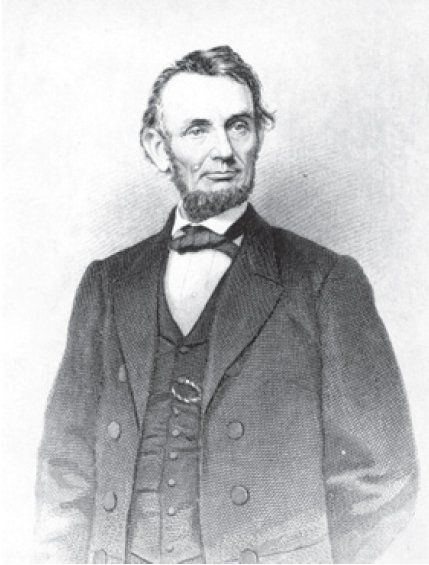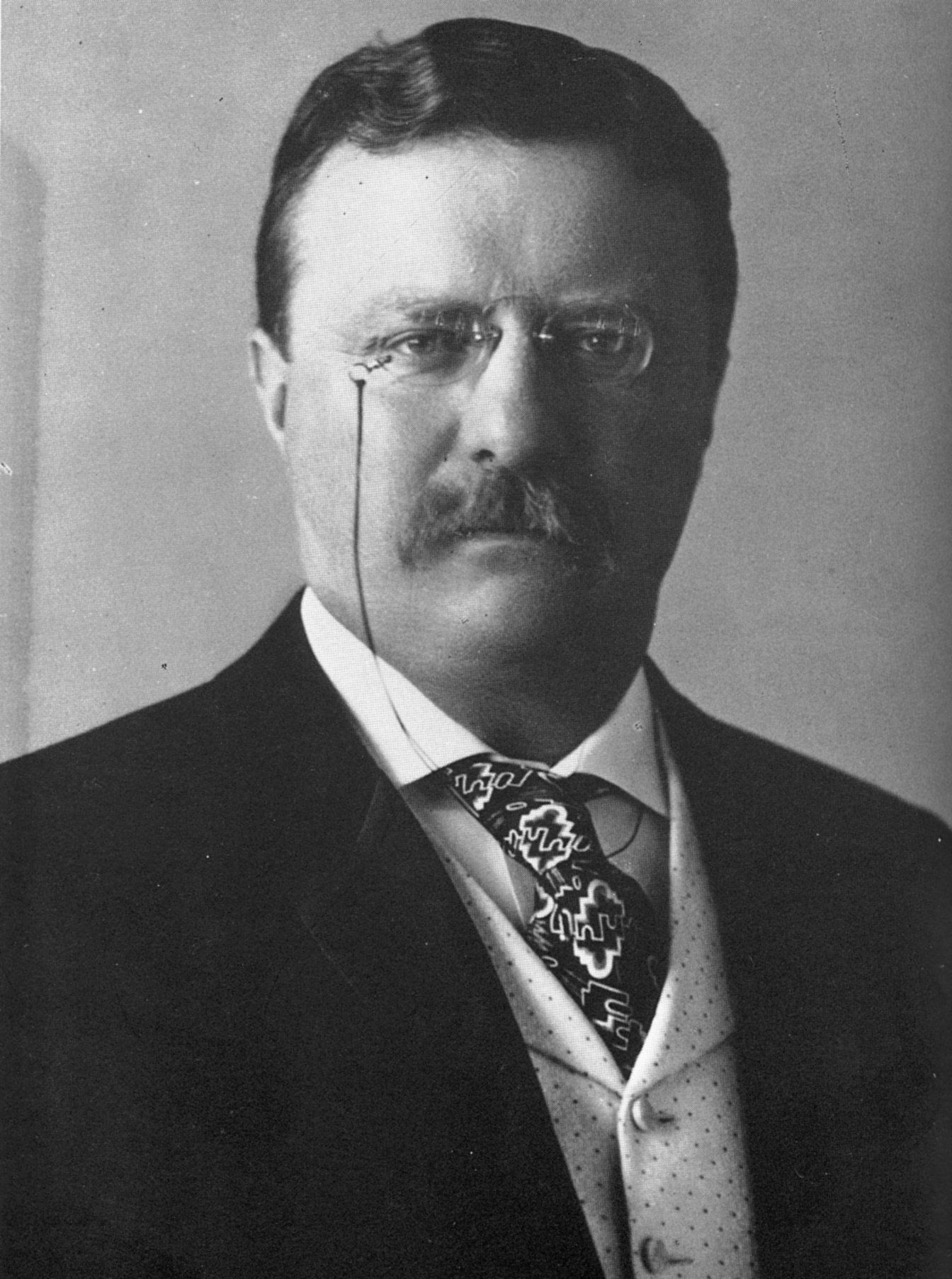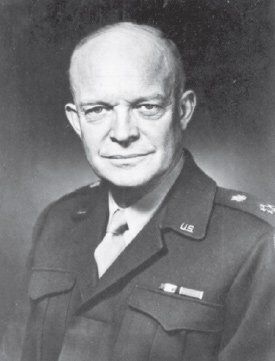
Abraham Lincoln visited in 1863
(Library of Congress)

George Washington visited in 1789 and 1794
(National Gallery, Smithsonian Institution)
The first President to come to Gettysburg – and he actually came twice – was our first President, George Washington. Before Washington D.C. came into existence, General Washington took the oath of office in New York City. He left his home in Mount Vernon, Virginia in March 1789 and traveled by coach through Gettysburg, which was a crossroads town even then. He returned to Gettysburg during his second term, where his official Presidential abode was in Philadelphia. Learning about a rebellion against a newly implemented Federal tax on whiskey in western Pennsylvania, Washington raised an army of 13,000 and marched toward the perpetrators of the Whiskey Rebellion. The insurrection soon collapsed at the news of Washington’s march, and he stopped on his return in Gettysburg at the Joshua Russell Tavern in October, 1794. In an interesting twist of historic fate, two armies passed through Gettysburg – and fought there for three days – 69 years later.
1
The second President to pass through Gettysburg en route to taking the oath of office, which by then occurred in Washington, D.C. was William Henry Harrison in 1841. Heading eastward from Ohio, Harrison stopped in the center square and gave a lengthy speech. He gave a long inaugural speech days later in Washington, caught a cold that worsened into pneumonia, and died after serving only a month in office.
2
James Buchanan, the first President from Pennsylvania, was born west of Gettysburg in near Mercersburg, and frequented Gettysburg in the years before he became President. A successful lawyer, he had an office for a time in the borough, before settling in Lancaster. His father, for whom he was named, was a cousin of Joshua Russell, the tavern owner who hosted George Washington in 1794.
Abraham Lincoln is the President most associated with Gettysburg. He visited the town for 24 hours, coming at the request of attorney David Wills for the dedication of the first National Cemetery. Lincoln arrived by train on the evening of November 18 and gave his famous Gettysburg Address on November 19. After speaking at the dedication, Lincoln attended a church service, met the public at a luncheon hosted by the Wills family, and saw a portion of the first day’s battle. He left by train that evening.
3
Ulysses S. Grant, like James Buchanan before him, visited Gettysburg before he became President. Arriving in an official capacity after the war in 1867, Grant visited the battlefield and stopped at the new orphanage on Baltimore Street. A circumspect man, Grant gave no speech.
With the extensive losses during the Civil War, Gettysburg began commemorating Memorial Day in 1867, then known as Decoration Day. With the new orphanage situated on Cemetery Hill, the orphans began the tradition of stewing flowers on the graves of the slain at Gettysburg – some of them the fathers of the grieving children. On May 30, 1878, another former Civil War general elected President, Rutherford B. Hayes, came to Gettysburg for the occasion. He stayed with Congressman and local historian Edward McPherson, toured the battlefield and, like Lincoln, gave a few remarks at the Decoration Day ceremony.
Grover Cleveland, who served as the 22nd and 24th Presidents of the United States, was the first Democratic President since James Buchanan. He appointed some former Confederate soldiers to his cabinet – an act that angered many Union veterans. In order to ameliorate the situation, Cleveland visited Gettysburg on May 4, 1885, two months after his inauguration, to view a Union encampment. Cleveland’s visit mollified his detractors, and twice more during his Presidency they invited him to the 24th and 25th anniversaries of the battle. Cleveland did not return to either event.
Nearly two decades later, President Theodore Roosevelt visited Gettysburg to speak in the National Cemetery on Decoration Day, in 1904. As a six-year-old boy, Roosevelt had watched the funeral entourage of President Lincoln from his New York City home. Always interested in history, Roosevelt relished his visit and came again on Memorial Day in 1912.
William Howard Taft, who succeeded Roosevelt, visited Gettysburg between Teddy’s visits, on May 31, 1909. Taft was the first U.S. President to dedicate a monument on the battlefield. He participated in the dedication of a monument to the U.S. Regulars, and later enjoyed a lavish luncheon at the Eagle Hotel, which once stood on Chambersburg Street in downtown Gettysburg.
In 1913, the historic Grand Reunion took place in Gettysburg, marking the 50th anniversary of the battle. It was an event unparalleled in history, as former foes united in benevolence. It was a massive undertaking, as 50,000 Civil War veterans attended, and many thousands of civilians came as well. The President at the time, Woodrow Wilson, attended one of the ceremonies, addressing the 50,000 veterans and crowds of spectators. He came again a few years later with General Pershing to officially open the Lincoln Highway. Wilson was the first Virginian to occupy the White House since John Tyler in 1842.
4
The Teapot Dome scandal was just beginning when Warren G. Harding, who served as President one hundred years ago, visited Gettysburg with his wife, Florence. On their way to Ohio for a vacation, the President stopped in Gettysburg for the day to view a reenactment of Pickett’s Charge on July 1, 1922. The couple stood on a tower, which no longer stands, in Ziegler’s Grove to watch the reenactment. The 29th President gave no speech and did not stay long. Just over a year later, the President died under unexplained circumstances.
Thrust into the Presidential office with the death of President Harding, Calvin Coolidge attended a Memorial Day ceremony in Gettysburg on May 30, 1928. He gave a short speech during a colossal rainstorm in the cemetery, accompanied by his wife, Grace. He said, “the greatest honor we can do to those who have died on this field of battle…is to soberly pledge ourselves to bend our every effort to prevent any occurrence of war.” The Coolidges knew the pain of losing a son, as theirs died suddenly in 1924 of an infection. Sadly, the words went unheeded.
5
Like Coolidge and Roosevelt, the next Commander-in-Chief, Herbert Hoover, visited Gettysburg by invitation for the annual Memorial Day ceremony, on May 30, 1930. As the Great Depression loomed with the recent stock market crash, Hoover reminded the public that “ Lincoln had a far greater task ” when he spoke at Gettysburg in 1863. The philanthropist and engineer who had humble beginnings, like Lincoln, was unable to undo the damage caused by the economic downturn, and received a lion’s share of the blame. He lost reelection to Franklin D. Roosevelt two years later. An interesting note to history occurred during Hoover’s speech at Gettysburg. For the first time, a Confederate veteran sat on the stand during the ceremony. He was 93-year-old William Haines, a former cavalry soldier who had served with Jeb Stuart during the Battle of Gettysburg. 6

Theodore Roosevelt visited in 1904 and 1912
(Library of Congress)
Like his distant cousin, Franklin D. Roosevelt visited Gettysburg twice as President. Like many of the Presidents who preceded him, FDR first came to Gettysburg as part of the Memorial Day commemoration in 1934. He visited again in 1938 for the Last Reunion, the 75th anniversary of the Battle of Gettysburg. Like Woodrow Wilson before him, he spoke to the 2,000 aged veterans of the war and myriad civilians. Like William Howard Taft, Roosevelt participated in the dedication of a memorial at Gettysburg, on July 3 – the Eternal Light Peace Memorial. He remarked in his address that the men “had stood under two flags then” but said that it only mattered “that you stand under one flag now.” The need for unity proved great, as war reared its head one year later for Europe and three years later for the United States, with the onset of World War II.7
If any President managed to visit Gettysburg without fanfare, it was Harry Truman, who decided on a whim to see the battlefield after a day at Camp David (then called Shangri-La). A native of Missouri, which was divided during the Civil War, Truman knew well that his ancestors were former slave owners and remained unreconstructed. When his aged mother learned later that he had stopped at Gettysburg, she retorted, “If you’d kept your eyes open, you’d probably have seen your grandmother’s silver and could’ve brought it home with you.” No wonder Harry had not wanted anyone to know. Unfortunately, he was recognized, and the nation – and his mother – knew he was here.8
While many Presidents passed through or visited Gettysburg, one President chose Gettysburg as his home. Dwight D. Eisenhower and his wife, Mamie, purchased a farm south of town in 1950. Ike had first visited Gettysburg as a cadet at West Point in 1913, and later was named commander of Camp Colt, a training ground for tank warfare during World War I that was situated on the battlefield. When Ike was elected President in 1952, the farm was still in need of restoration. It proved to be a respite from Washington during his two terms. After serving as President, Ike returned to Gettysburg in January, 1961 and lived for many years at his beloved farm. He maintained an office at Gettysburg College, where he wrote his memoirs, At Ease . When General Eisenhower passed away, he left his farm to the American people. When Mamie died in 1979, the farm passed into the hands of the National Park Service, and visitors are welcome to tour the home of the 34th President.

Dwight D. Eisenhower purchased a farm in Gettysburg in 1950
(Library of Congress)
John F. Kennedy visited the battlefield on March 30, 1963, just six months before his assassination. He toured the field with his wife Jackie, and the pair were escorted by historian and park guide Colonel Jacob M. Sheads. Kennedy, who was deeply interested in history, descended from an ancestor from the Irish Brigade who fought at Gettysburg. When Colonel Sheads asked the President if he knew the meaning of the brigade’s battle cry, Faugh a Ballagh , Kennedy replied, “It means ‘Clear the Way’.” And he was right.9
During the tour, the Kennedys were impressed with the Eternal Light Peace Memorial, which had been dedicated by Franklin Roosevelt 25 years earlier. Jackie had remarked that the burning flame would “make an excellent memorial” and JFK agreed. When he was killed on November 22, 1963, Mrs. Kennedy asked for a memorial for her husband like the one at Gettysburg. The eternal flame that marks his grave at Arlington is fashioned, albeit in a smaller manner, after Gettysburg’s Eternal Light Peace Memorial.10
Kennedy’s Vice-President and successor, Lyndon B. Johnson, visited Gettysburg before Kennedy did. When Ike was in the White House, Johnson visited the Eisenhower farm when he served as Senate Majority Leader. In spite of belonging to rival political parties, Johnson and Eisenhower were good friends. Johnson was one of three Presidents (along with Truman and Nixon) who attended Ike’s burial in Abilene, Kansas in 1969.
11
Richard Nixon is, so far, the only U.S. President who has an ancestor buried in the Soldiers National Cemetery. His great-grandfather, George Nixon, was mortally wounded in the battle and is buried in the Ohio section. Nixon visited Gettysburg twice as President and once as Vice-President. On his first visit, he stopped by the grave of his ancestor. He visited again, as President, to accompany the recently widowed Mamie Eisenhower to Easter services at the Gettysburg Presbyterian church in 1972. He stopped by Gettysburg on another occasion, also to visit Mrs. Eisenhower.
Gerald Ford came to Gettysburg after his term had expired, to speak at Gettysburg College in 1980. Shortly before his speech, locals saw the former President touring the town with his bodyguard.
In 1978, Jimmy Carter, the longest living U.S. President, visited Gettysburg twice during the summer. On July 6, he came to tour the battlefield; on September 10, he brought two world leaders to the battlefield: Anwar Sadat of Egypt and Menachim Begin of Israel. The three men toured the battlefield, then walked through the National Cemetery, where Abraham Lincoln had uttered the Gettysburg Address. While Carter gave no speech, Menachim Begin spoke with reporters, and said simply that he admired Abraham Lincoln.12
Ronald Reagan, George H.W. Bush and George W. Bush all visited Gettysburg before they served as President of the United States. George W. Bush, who visited in 2000, gave a speech as a Presidential hopeful. He later visited as President, taking a tour with some of his cabinet, in the fall of 2008.
Donald Trump came to Gettysburg during his election campaign of 2016 and gave a speech about “draining the swamp”. Joe Biden, the second President to be elected from Pennsylvania, came to Gettysburg in the fall of 2020, during the height of the Covid-19 pandemic. He gave a speech at a location that overlooked the battlefield, asking for unity.13
While there are other cities which have hosted a greater number of Presidents, Gettysburg, for its size, has been visited by a significant number of them. It is an honor that so many of the nation’s most celebrated commanders have seen fit to come to Gettysburg. With its still busy crossroads and its now quiet fields, Gettysburg has secured its place in history for many reasons – and even our Presidents realize it.
Sources: Angelo, Beverly. First Mothers: The Women Who Shaped the Presidents . New York: HarperCollins, 2000. The Centre Daily Times, State College, PA, Oct. 26, 2016. Christ, Elwood. “We Are Met on a Great Battlefield…American Presidential Performances, 1863-1938.” Manuscript, Adams County Historical Society (hereafter ACHS). The Gettysburg Star & Sentinel, June 6, 1878. Copy, ACHS. The Gettysburg Times, July 5, 1938, located in The Last Reunion File, Gettysburg National Military Park (hereafter GNMP). The Gettysburg Times, Sep. 11, 1978. The Grand Reunion File, GNMP. Interview with Robert MacAskill by author, April 13,1999. Interview with Colonel Sheads by author, April 14,1998. LNP/Always Lancaster News, Oct. 7, 2020. The Joshua Russell Family File, ACHS. The Soldiers National Cemetery Dedication File, GNMP. Historic newspapers accessed by newspapers.com.
End Notes:
1. Russell Family File, ACHS.
2. Christ, p. 60.
3. Soldiers National Cemetery Dedication File, GNMP.
4. Grand Reunion File GNMP.
5. Christ, p. 91.
6. Ibid., p. 92.
7. Gettysburg Times, Jul. 5, 1938, Last Reunion File, GNMP.
8. Angelo, p. 57.
9. Interview with Col. Sheads, Apr. 14, 1998.
10. Ibid. Additional information for Mrs. Kennedy’s insistence on a peace light for her husband’s grave was verified by licensed battlefield guide Bob Mullin, who spoke with Jack Valenti, who worked at LBJ’s request on JFK’s funeral preparations.
11. Interview with Robert MacAskill, Apr. 13, 1999. Reverend MacAskill was Ike’s pastor and officiated at Ike’s burial in Abilene.
12. Gettysburg Times, Sep. 11, 1978.
13. The Centre Daily Times, 26, Oct., 2016. LNP, Oct 7, 2020.
Side Bar
A Presidential Namesake
It is an interesting footnote to Gettysburg’s Presidential history that the county where Gettysburg is the county seat, Adams County, Pennsylvania, is named for a President who never came to Gettysburg: the 2nd President, John Adams.
When Gettysburg first became a borough in 1786, the town was then part of York County. According to Gettysburg historian and Congressman Edward McPherson, the settlers of the region that included Gettysburg were of mostly Irish or German ancestry. James Gettys, the man for whom Gettysburg is named, was the son of Irish immigrants. Additional settlers integral to the town, such as tavern owner Joshua Russell and the reverend Alexander Dobbin, were also of Irish descent.
Just as the Irish and English did not get along well in their motherlands, the angst between the two continued in America. By the late 18th century, the citizens of Gettysburg and other towns nearby petitioned for a county of their own to distance themselves from the local government of York – which was settled by the British. In January 1800 they got their wish, and Adams County was created. Gettysburg became its county seat.
When Adams County became official, it was just weeks after the death of George Washington, who died December 14, 1799. President Adams was busy calling a new cabinet (he had kept Washington’s, out of respect) and overseeing the finishing touches of the new Executive Mansion in the new city of Washington, D.C., before he could move in months later. He would not have considered coming to Gettysburg during his tumultuous last year in office.
(Information from the Adams County Historical Society)

